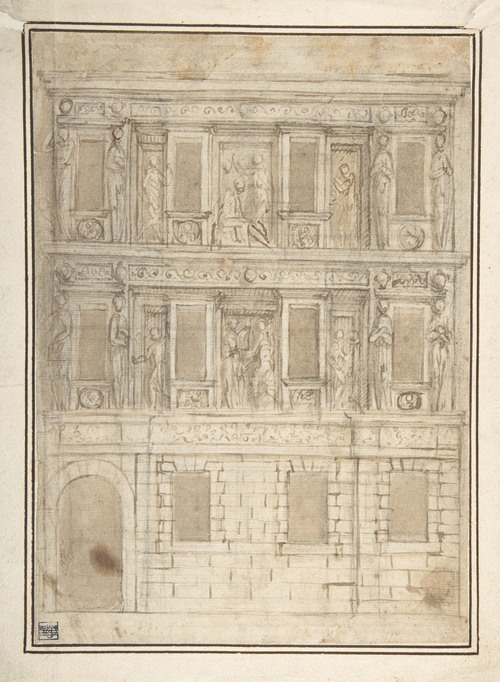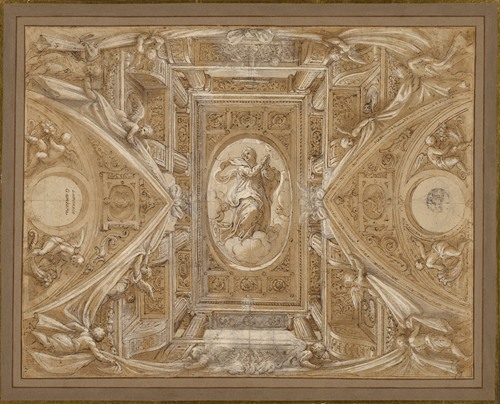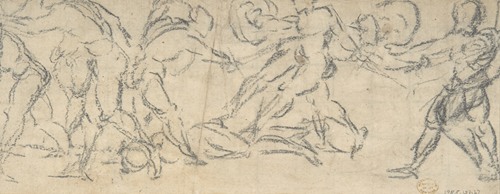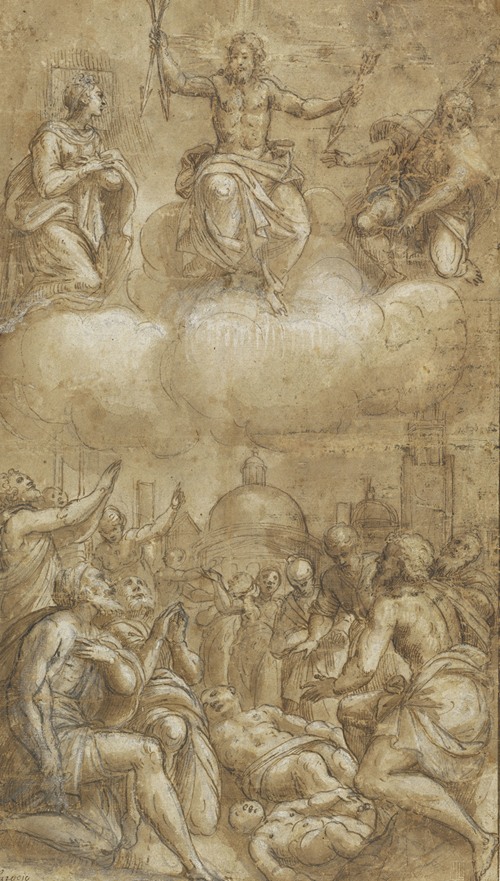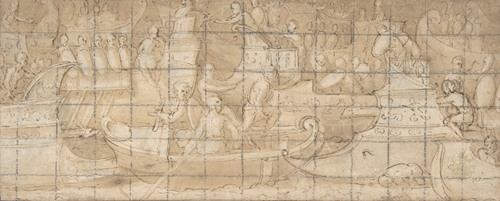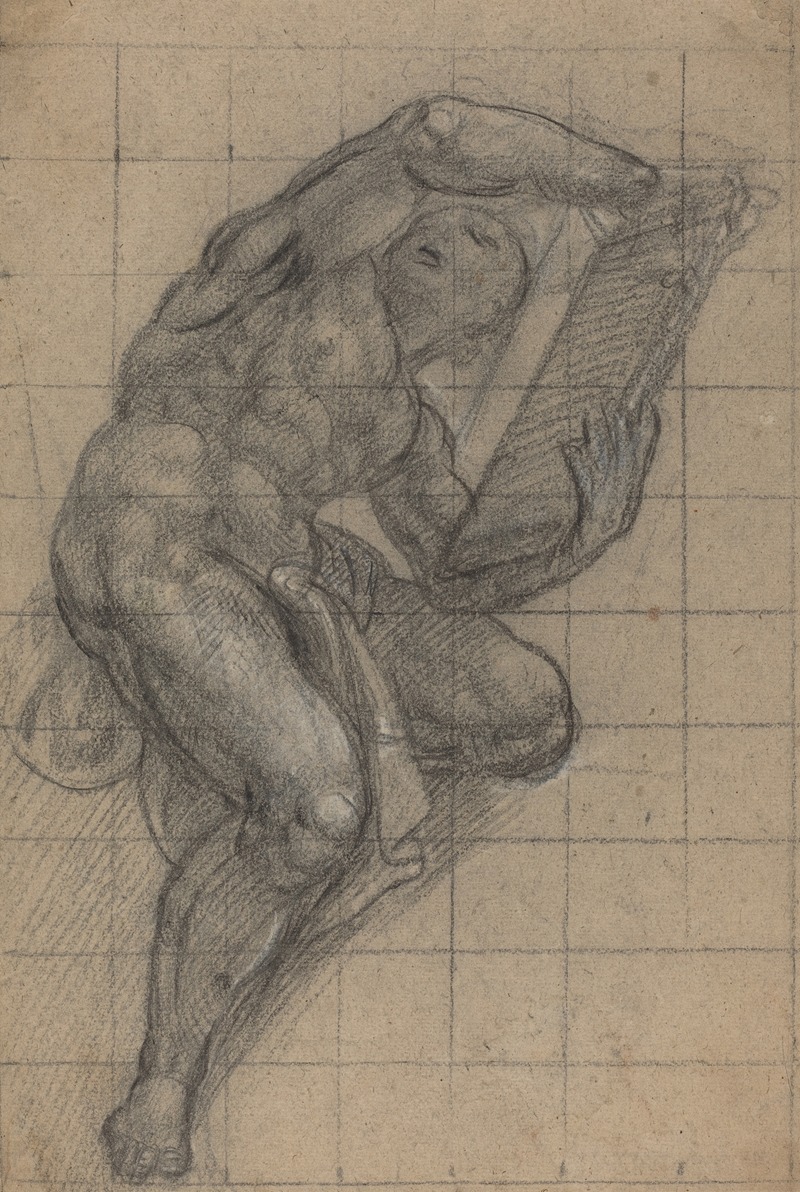
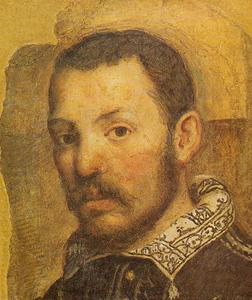
Cremonese painter Giulio Campi discovered Lattanzio Gambara, a tailor's son, in 1545. Campi took him to Cremona as his pupil and taught him the then-fashionable Lombard and Emilian Mannerist style. Four years later Gambara returned to Brescia, where he studied under Brescia's most important painter, with whom he later collaborated regularly and whose daughter he married in 1556. A prolific fresco painter and draftsman, Gambara became Brescia's leading artist after his teacher's death in 1560. He lived in Parma from 1567 to 1573, where he worked on one of his most significant frescoes, the nave arcade and internal facade of Parma cathedral, in collaboration with Cremonese painter Bernardino Gatti. Gambara then returned to Brescia to begin frescoes for a church there. He died soon after, due to a fall from scaffolding in the church vault.
Gambara's style combined decorative elegance with complex foreshortening and monumental qualities. In time, he exchanged many of the energetic aspects of his Mannerism for a more classicizing orientation.
